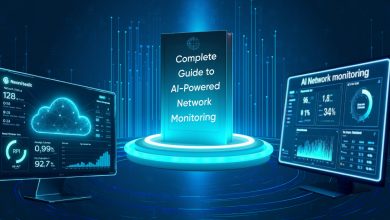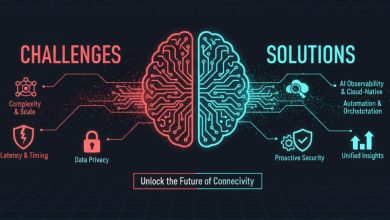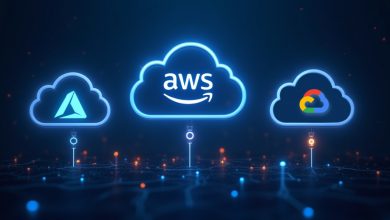Network Security Monitoring with AI: The Ultimate 2025 Guide
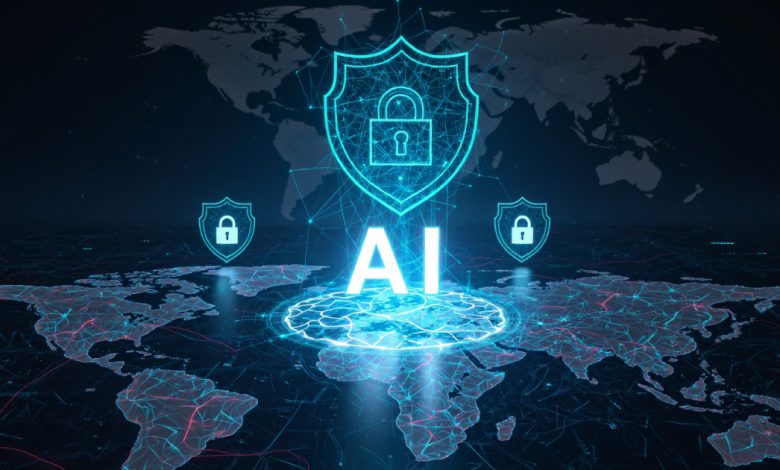
Introduction
Network monitoring is noisy. IT and security teams sift through thousands of alerts across multiple tools, yet breaches and outages persist because critical signals are scattered across silos, making real-time correlation impossible. Fundamentally, fragmentation scatters signals across tools, making real-time correlation humanly impossible.
AI observability changes that. By combining agentic and generative AI, modern platforms interpret massive data streams across networks, applications, and infrastructure. They surface risks faster, predict emerging threats, and even automate remediation before minor anomalies become full-blown incidents.
In this guide, we’ll break down how AI is changing network security monitoring, what matters most, and how ScoutITAi replaces noisy dashboards with clear, plain language insights that engineers and executives can act on. Let’s start by defining what AI-driven network security is vs. traditional approaches.
What Is AI-Driven Network Security Monitoring?
In the past, most network monitoring tools relied on static rules or known threat signatures. The problem? They often flooded teams with irrelevant alerts while missing real dangers entirely.
AI-powered monitoring doesn’t wait for signatures; it models normal behavior across users, data flows, and app-to-app traffic, instantly flagging anything irregular and taking action when needed.
Instead of threshold hunting, AI models your baseline, detects anomalies as they happen, and auto-responds by isolating systems, dropping traffic, and updating rules.
Step-by-step checklist for setting up AI-based monitoring in your network
AI Security Building Blocks
1. Unified Data Collection
Modern environments have data centers and multi-cloud. ScoutITAI pulls signals from AWS, Azure, GCP, and beyond into one view of your entire environment.
2. Advanced Analytics and Intelligence
AI security tools combine:
- Machine learning to detect anomalies.
- Natural language processing (NLP) to translate technical data into English.
- Predictive analytics to predict risks before they happen.
Multi-layer analytics condenses constant data into insight, reducing detection time from hours to minutes.
3. Automated Response and Orchestration
After validation, AI acts fast: quarantine, block, notify. Result: faster with fewer errors.
AI Is Changing Network Security Forever
Smarter, Proactive Threat Detection
Traditional security tools rely on fixed rules and known signatures, which can be slow to catch new threats.
AI changes this by analyzing huge amounts of network traffic in real time, spotting unusual behavior that could signal new attacks or insider threats, and noticing subtle patterns that humans might miss, like slow, hidden attacks.
This makes defense faster and more proactive, stopping problems before they can cause serious damage.
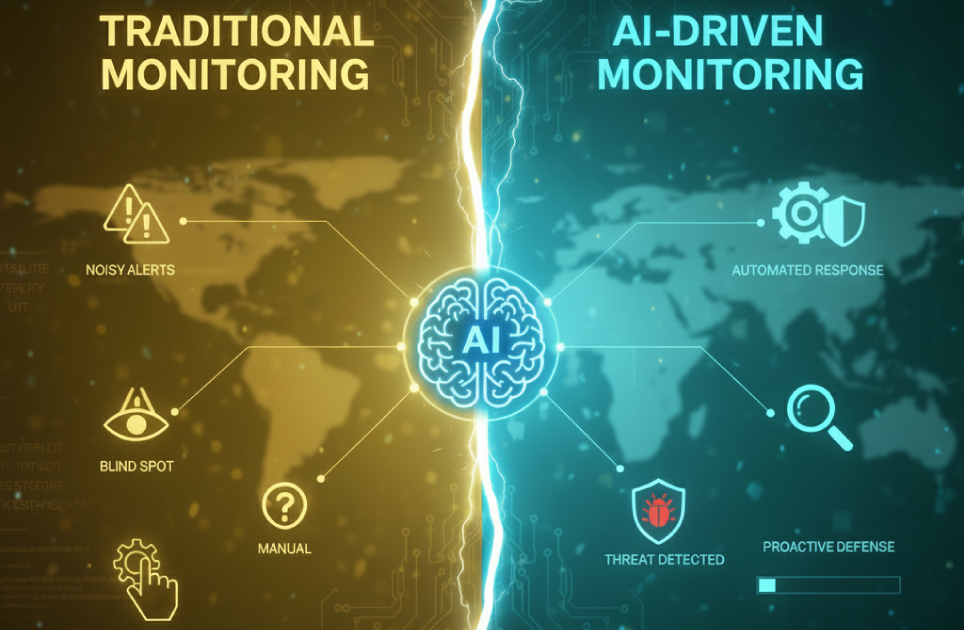
Automated Response and Remediation
Intelligent tools help network security respond instantly to threats.
It can automatically isolate systems that have been compromised, adjust firewalls or access controls instantly, and cut response times from hours or days down to seconds.
This quick action helps prevent damage and reduces the need for humans to step in, making security faster, smarter, and more reliable.
The AI Behind It All
- Machine Learning (ML): Finds known and unknown threats by detecting behavioral anomalies.
- Natural Language Processing (NLP): Reads and summarizes threat intelligence feeds and security updates in plain English.
- Predictive Analytics: Let’s security teams see around corners and get ahead of threats before attackers do.
How to Successfully Implement AI Security Monitoring
Deploying AI security monitoring isn’t a shortcut; it’s a journey. Phased deployment means smooth rollout, high adoption, and clear ROI.
| Assessment | Weeks 1–2 | Review existing tools, identify blind spots, and define security priorities. | Clear understanding of data gaps and risks. |
| Integration | Weeks 3–6 | Connect data sources and normalize telemetry across platforms | 80% or more of systems successfully integrated. |
| Training | Weeks 7–10 | Fine-tune AI models and calibrate thresholds for accuracy. | Fewer than 20% false positives. |
| Deployment | Weeks 11–12 | Go live with AI-driven monitoring and team training. | Platform fully operational with team adoption. |
| Optimization | Ongoing | Continuously improve automation and measure results. | 50% faster incident resolution times. |
What to Look for in an AI Security Platform
When evaluating AI security solutions, look for:
- Open APIs to integrate with your existing SIEM, EDR, and APM tools.
- Transparent AI that analysts and leaders can trust for every insight.
- Scalability to handle high-volume, real-time data across hybrid and multi-cloud environments.
- Plain language reporting to bridge the gap between tech teams and business leaders.
- 24/7 expert support for onboarding, tuning, and incident response.
Overcoming Common AI Security Challenges
- Inaccurate Data: AI decisions are only as good as the data it sees. Make sure your data is reliable and well organized.
- Limited Expertise: Bridge skill gaps by providing hands-on training and choosing AI tools that are intuitive for your team.
- Integration Hurdles: Simplify adoption by starting with systems that are easy to connect and gradually incorporate older or more complex platforms.
The ROI of AI Network Security Monitoring
AI-driven security monitoring typically delivers payback within 6–12 months, with organizations reporting significant gains such as:
- 30–40% higher analyst productivity
- Up to 85% fewer false alerts
- 60–70% faster detection and response times
- Nearly 50% fewer breaches overall
Beyond security, AI reduces outages by finding performance and config issues early, saving time and cost.
The Future of AI in Cybersecurity
AI in cybersecurity is just getting started with features like
- Quantum-resistant AI that can withstand future cryptographic threats.
- Federated learning to train AI models without exposing sensitive data.
- Explainable AI (XAI) for transparency and auditability.
- AI vs. AI: Security systems countering threats created by AI-driven attacks.
- Zero Trust + AI, combining continuous verification with intelligent access control.
- Autonomous response systems that detect, contain, and fix incidents automatically.
Conclusion
AI-powered network security monitoring isn’t a feature upgrade; it’s a fundamental change in how you protect digital assets.
Instead of drowning in data, your team can focus on what matters: staying ahead of threats. AI doesn’t replace human expertise; it amplifies it, providing clear visibility and automated action so you can move faster and smarter.
Companies that get in now will have resilient, adaptive defenses for tomorrow’s ever-changing threat landscape.
Ready to see it in action?
Get started with ScoutITAi and transform complexity into simple, high-impact actions across your entire network.
Frequently Asked Questions
It’s the use of artificial intelligence to automatically detect, assess, and respond to threats in real time, minimizing human error and false positives.
AI learns normal behavior across your network and flags anything unusual, even if it doesn’t match known attack patterns.
Yes. Platforms like ScoutITAi connect seamlessly through open APIs to SIEMs, EDR/NDR, and cloud tools.
Most organizations see measurable gains within 6–12 months, driven by faster response times and fewer false alerts.
Definitely. AI consolidates alerts into coherent incidents, prioritizes what matters, and provides clear context to reduce noise.
Yes. Start with low-risk actions (e.g., quarantining a device or blocking suspicious traffic) and expand automation as confidence grows.
Yes. AI continuously evaluates user and device trust, verifying every access request to align with Zero Trust principles.
Definitely. Platforms like ScoutITAI unify telemetry from AWS, Azure, GCP, and on-prem systems to provide end-to-end visibility.

Tony Davis
Director of Agentic Solutions & Compliance

